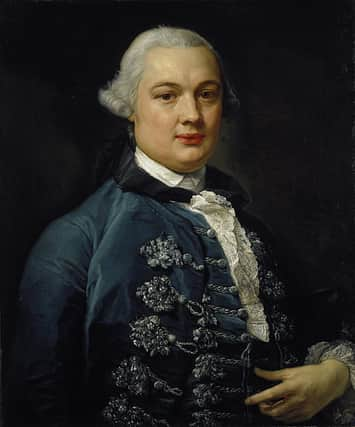James Bruce: The man who discovered the source of the Nile


FORGET for a moment the exploits of David Livingstone, the discoveries of Mungo Park, or the escapades of Indiana Jones' dad; James "Abyssinian" Bruce was the original Scots explorer.
Born in 1730 at Kinnaird House near Larbert, Stirlingshire, James Bruce travelled for over a dozen years in Africa and is credited with discovering the source of the Nile.
But his life should have been very different.
Advertisement
Hide AdAdvertisement
Hide AdHaving studied to become a barrister, Bruce ended up marrying the daughter of a wealthy wine importer. When his wife died suddenly after just 9 months of marriage, Bruce journeyed to the vineyards of Spain and Portugal. While in southern Europe, he took a keen interest in learning Arabic and Ge’ez, a long-since extinct language native to northern Ethiopia, and spent half a year on the Italian peninsula studying antiquities.
In March 1763, Bruce was appointed to the role of British consul at Algiers and received a commission to study the ancient ruins there. Over the next five years he travelled extensively to study ancient sites throughout North Africa and the Levant.
When Bruce arrived in Alexandria, Egypt in 1768, he made it his mission to discover the source of the Nile. Following the great river, Bruce made his way into Ethiopia, then known as Abyssinia. In November 1770, he had accomplished his goal, having climbed to a height of almost 10,000 feet.
After a long and perilous journey homeward, Bruce returned to Britain in 1774 and went on to publish detailed accounts of his expeditions. However, his tales were widely treated with scorn and disbelief. It was not until after his death that historians were able to confirm their accuracy.
Although his expeditions failed to attract the level of commendation which they perhaps deserved, James Bruce is credited with adding considerably to 18th century geographical knowledge and for paving the way for future British explorers such as Richard Francis Burton and John Hanning Speke.